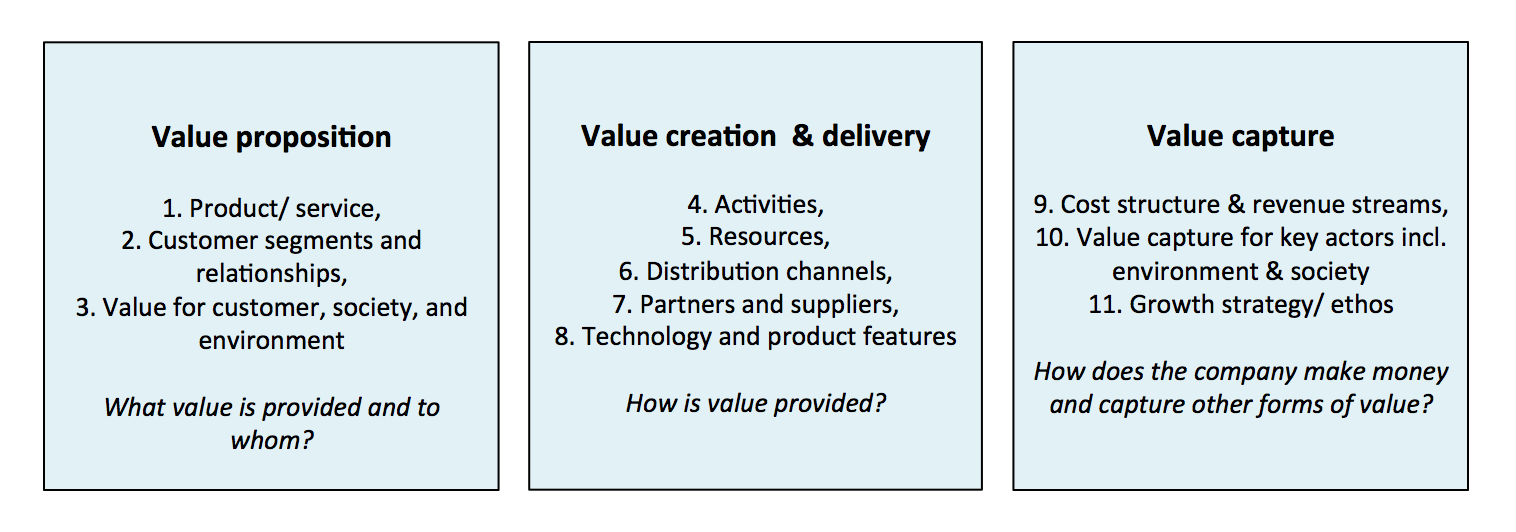Value mapping for sustainable business thinking
Pressures on business to operate sustainably are increasing. As a result, companies need to adopt a systemic approach to doing business, that integrates consideration of the three dimensions of sustainability – social, environmental, and economic – in a manner that generates shared value creation for all stakeholders including the environment and society.
This is referred to as “sustainable business thinking”.
The business model is a useful framework for system-level innovation. It is about the way business is done. It makes a link between different activities inside a company, such as design and production, to more outward looking activities, such as supply chain management, managing partnerships, and distribution.
A business model framework is included below.
Figure. Business model framework. Bocken et al. (2015), adapted from Richardson (2008), Osterwalder and Pigneur (2010) Bocken et al. (2013) and Short et al. (2013).
A value mapping tool has been developed before to assist in ‘sustainable business modelling’ (see below). The tools aims to help create awareness of stakeholder perspectives, contradictions and synergies, and consider the value captured, missed and destroyed for each stakeholder to develop new opportunities that could benefit the whole network of stakeholders, not just the firm and the customer.

Figure. Value mapping (this particular version was used in a joint workshop for AMFI together with Christiaan Kraaijenhagen 20 Jan, 2015)
In this study, the potential use of value mapping as a tool and process was explored, to encourage sustainable business thinking. A range of workshops (over 20) was held with different audiences – industry, academic and student, non-profit – to get a better idea of the usefulness of the tool in different settings.
The potential applications to stimulate sustainable business thinking identified by using the tool include the following:
(1) Ideation for start-ups and established firms, to develop new sustainable business model ideas
(2) Education, to learn about sustainable business model innovation, by using case studies for example
(3) Product and process design and life cycle thinking
(4) Evaluation and screening, of new business model ideas
(5) Systems thinking, to take a more holistic perspective on doing business
(6) Collaboration, to find out about each other’s ‘value maps’ and find common ground
More information on value mapping as an approach is available at:

